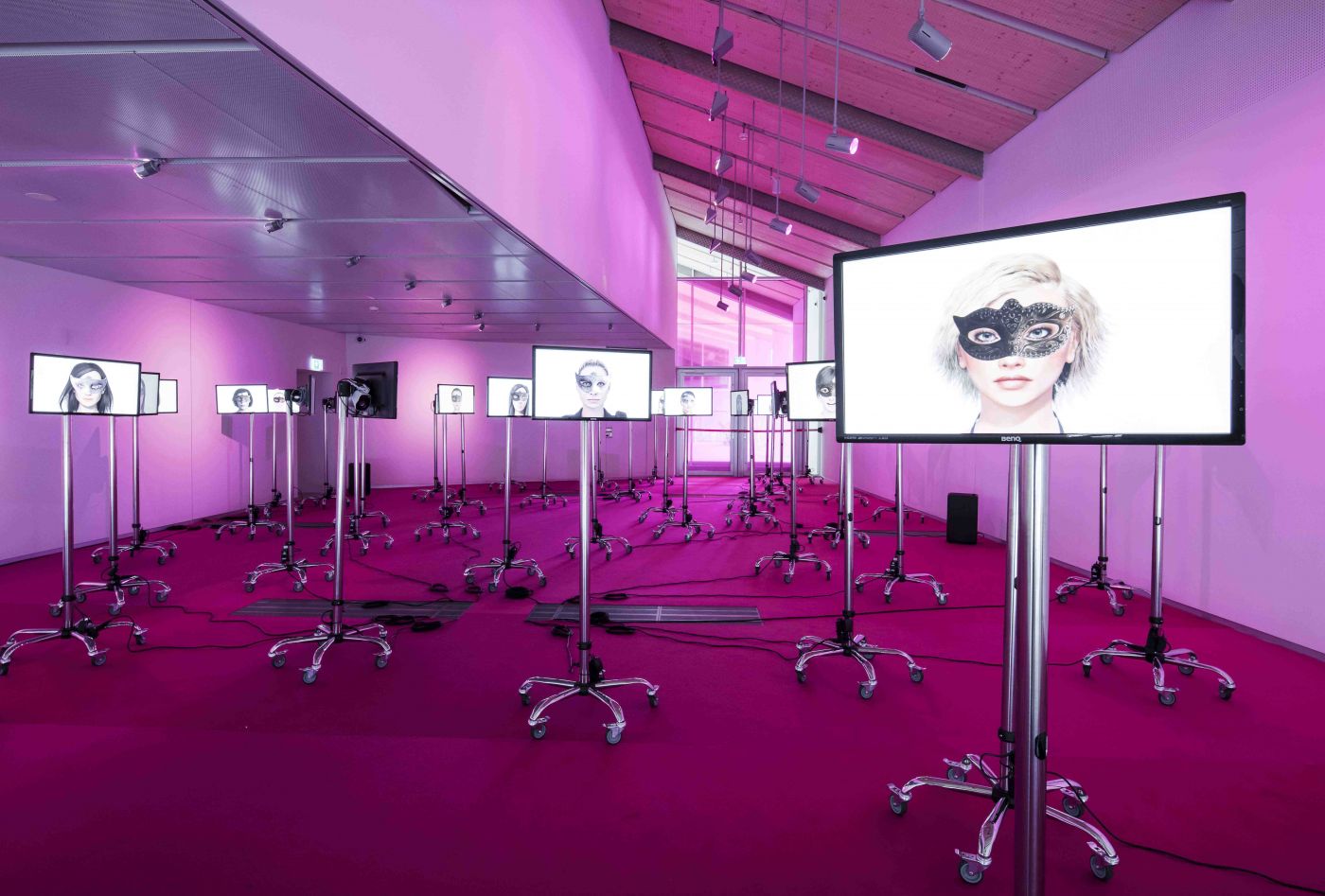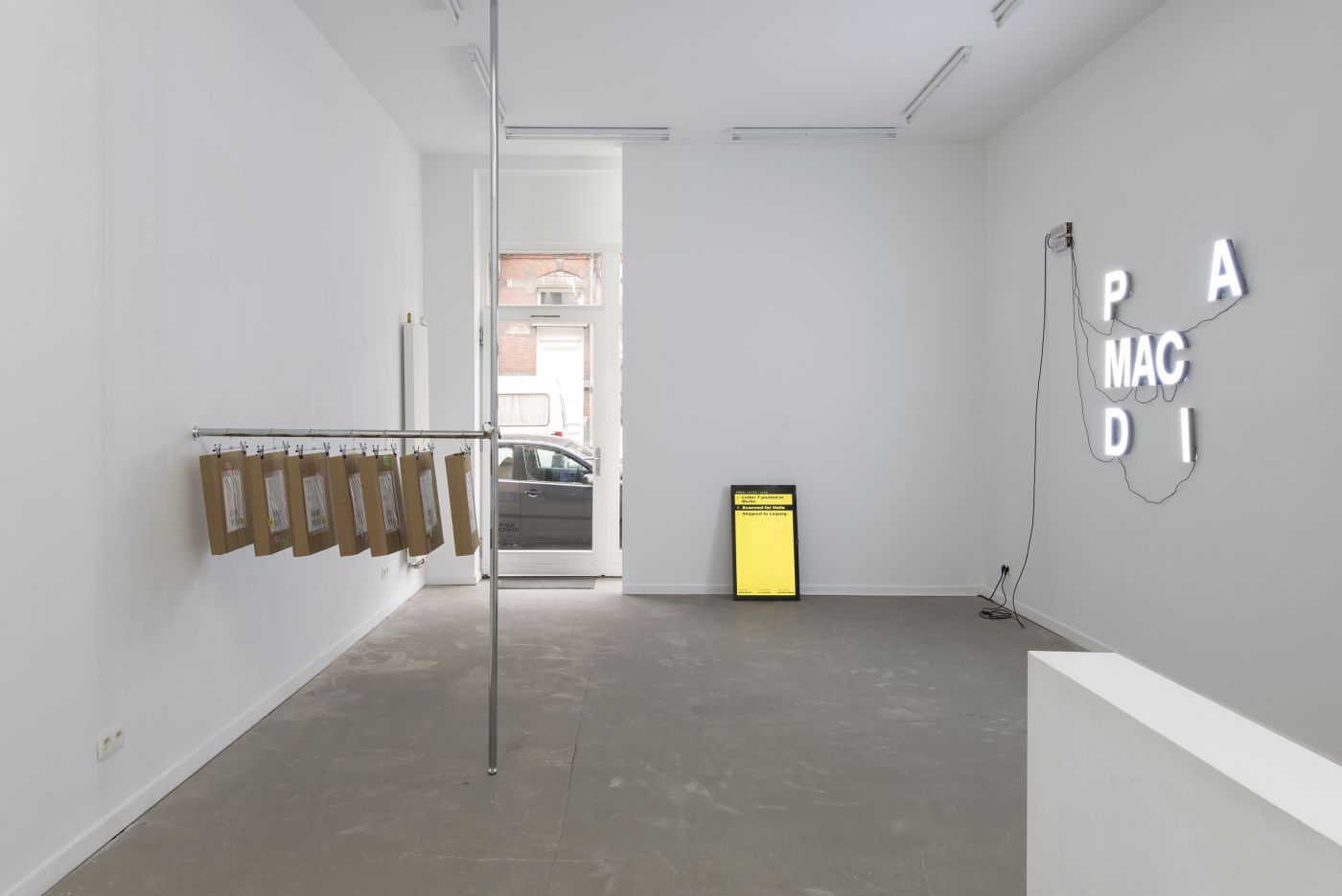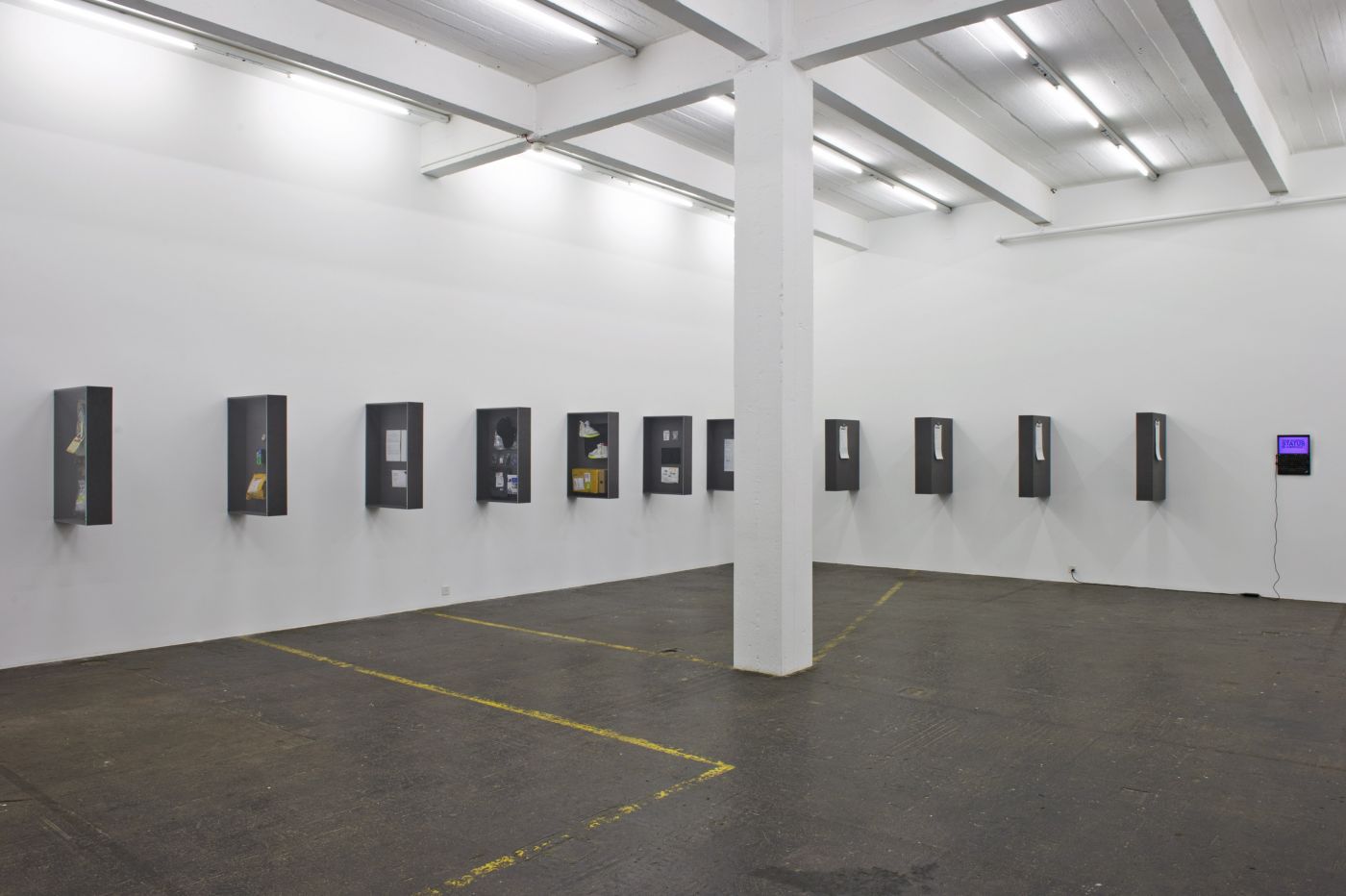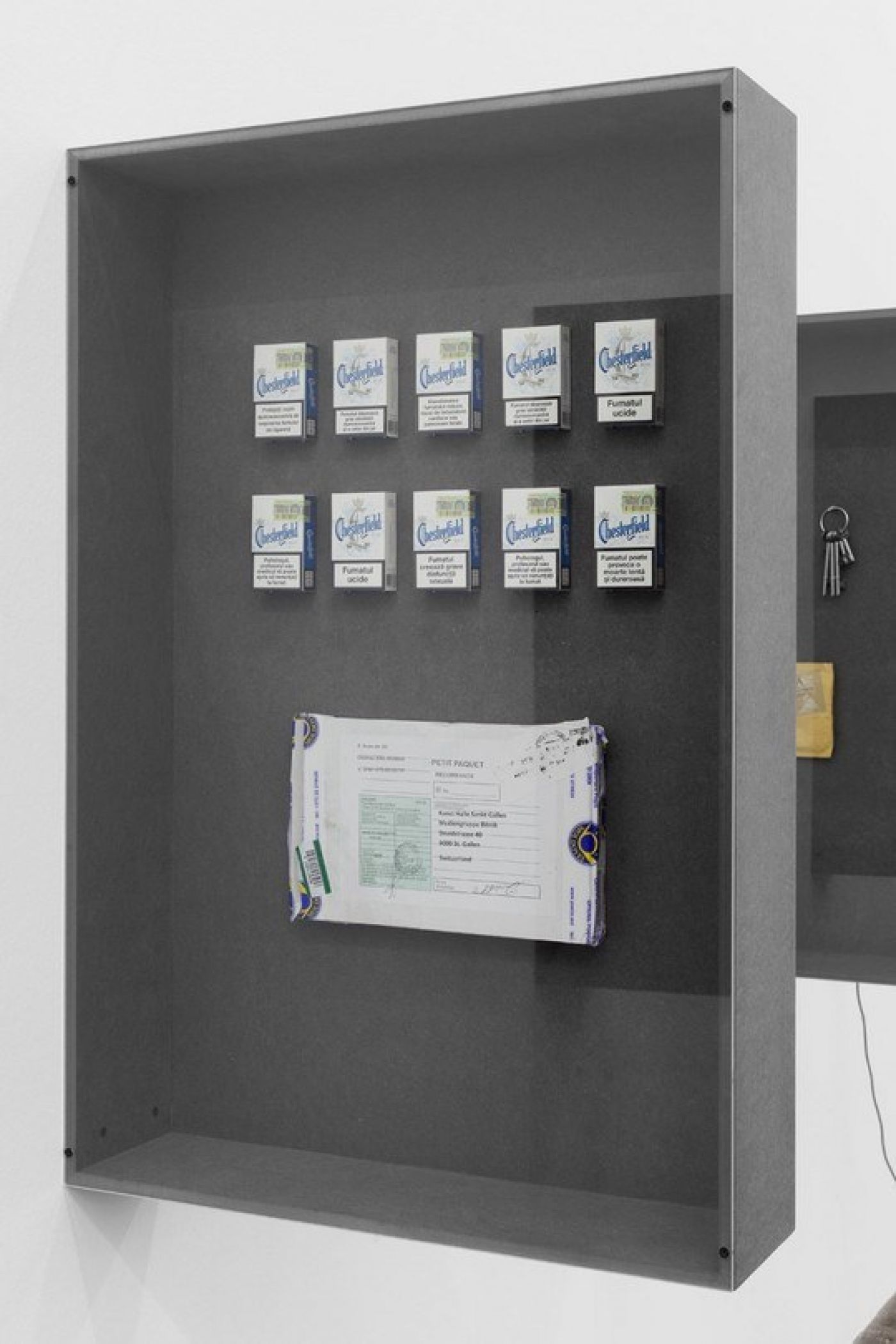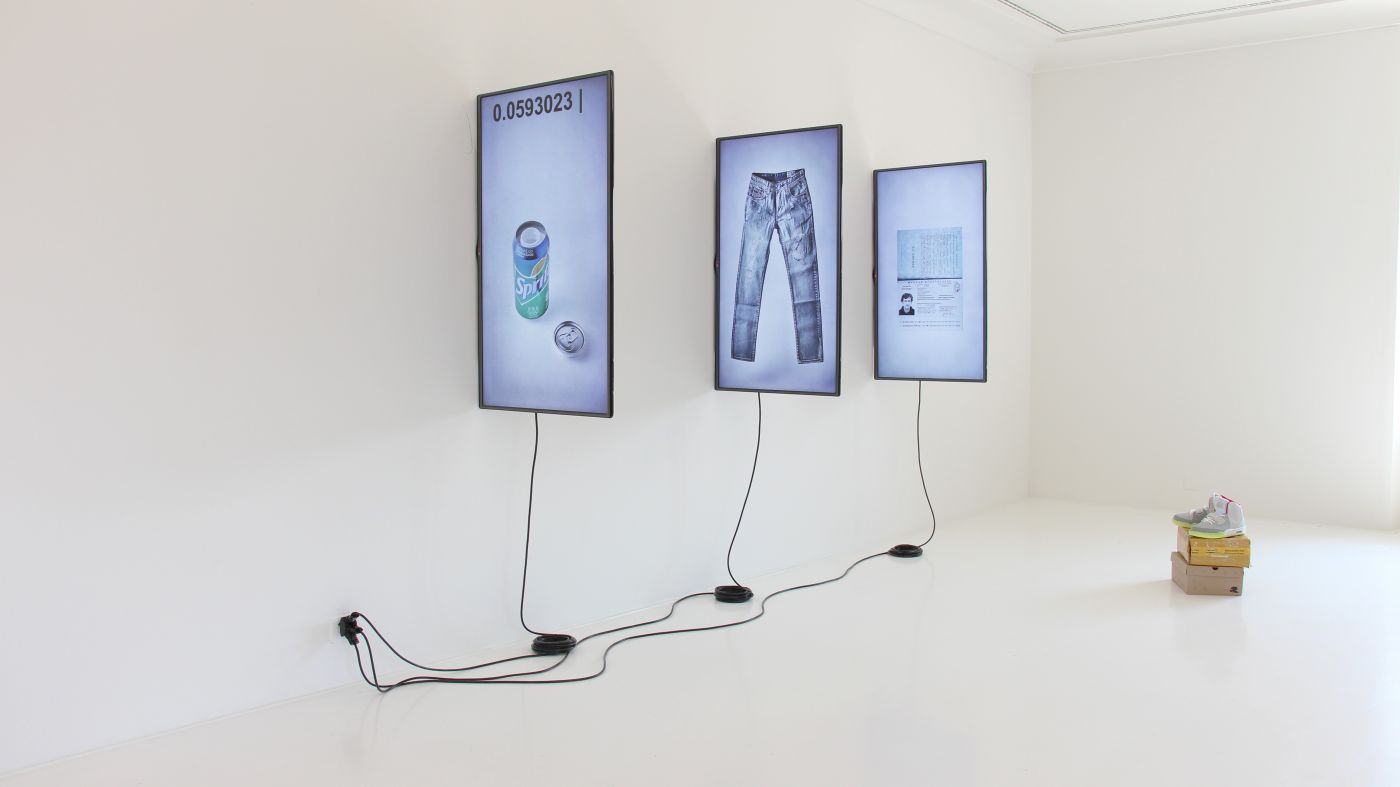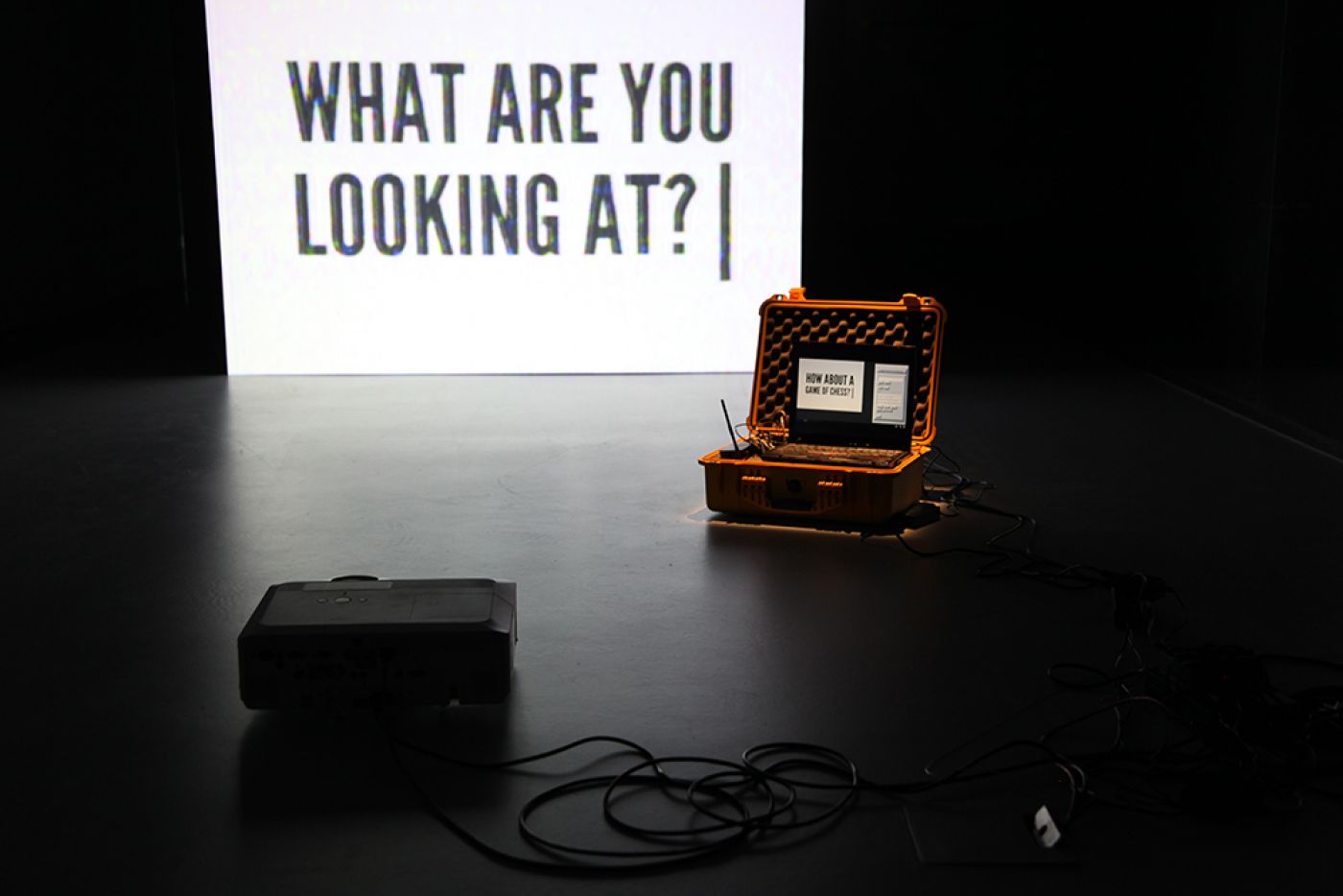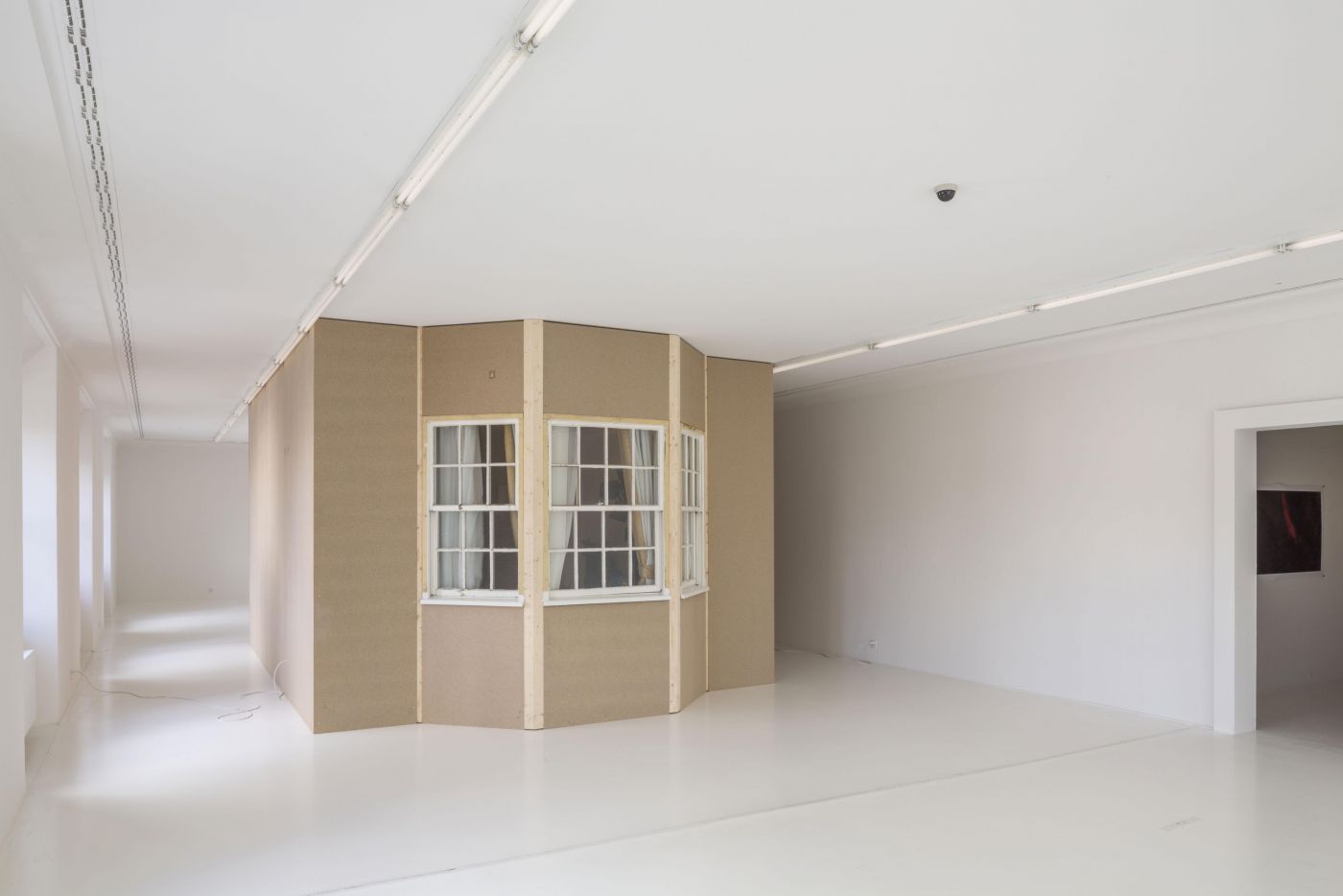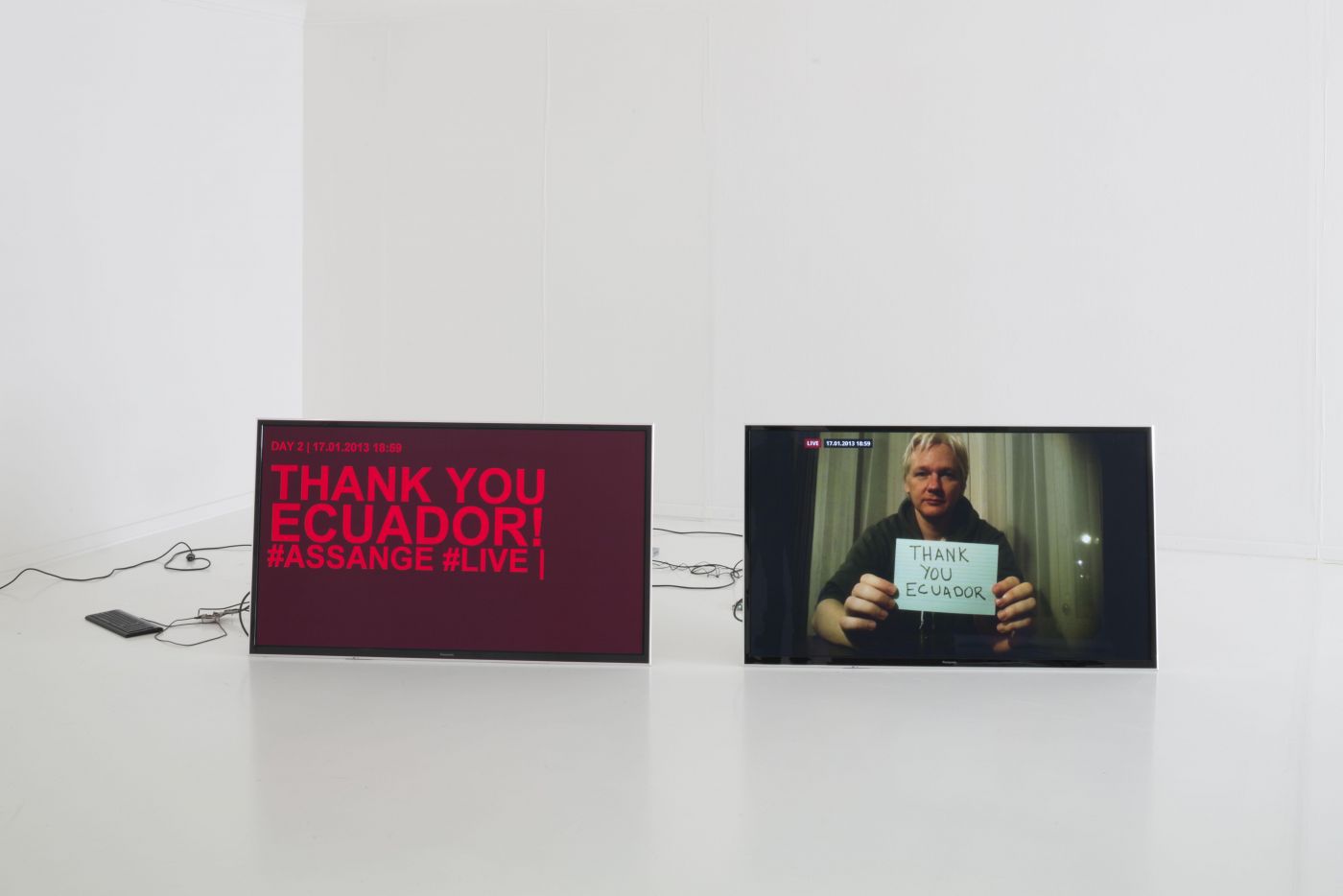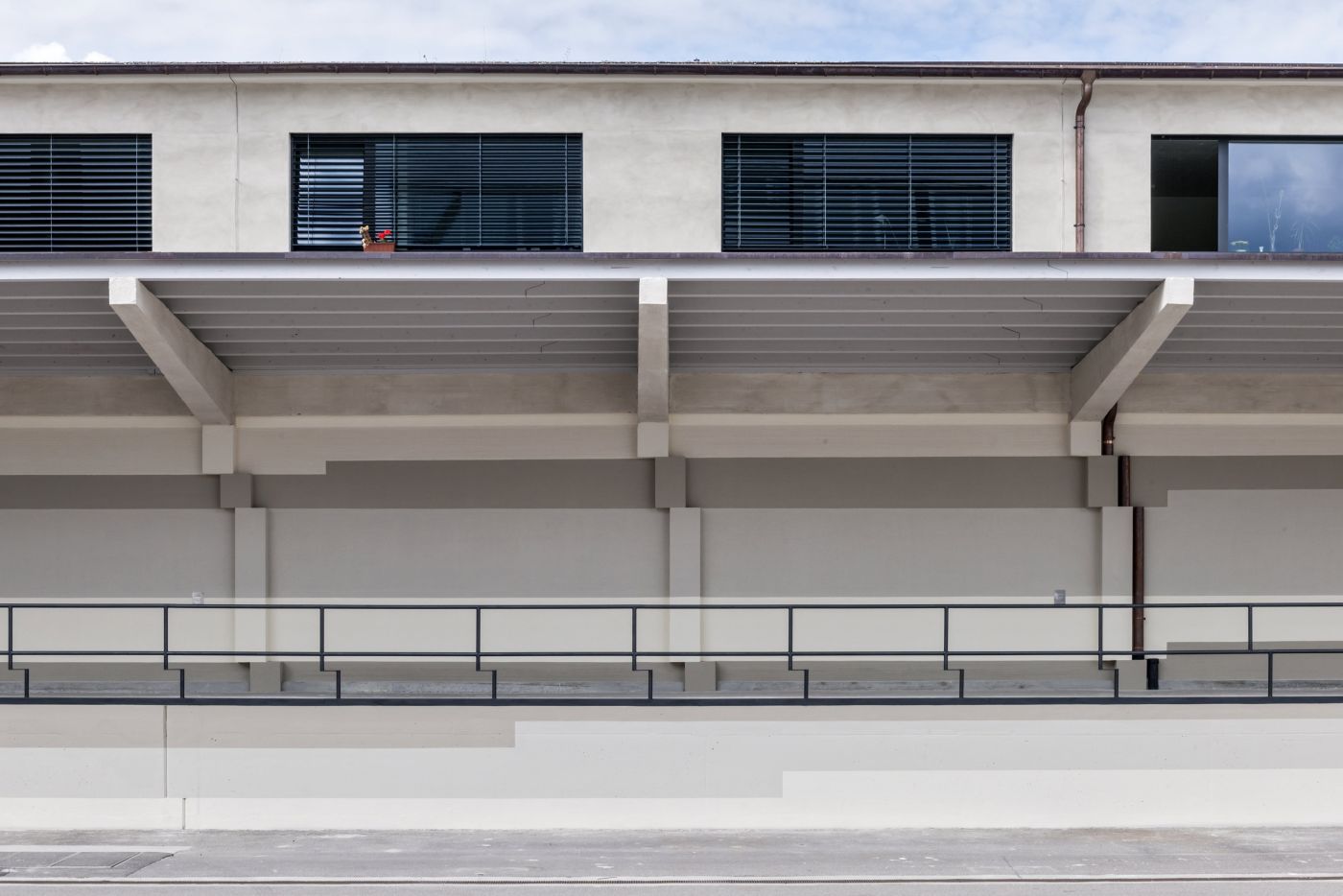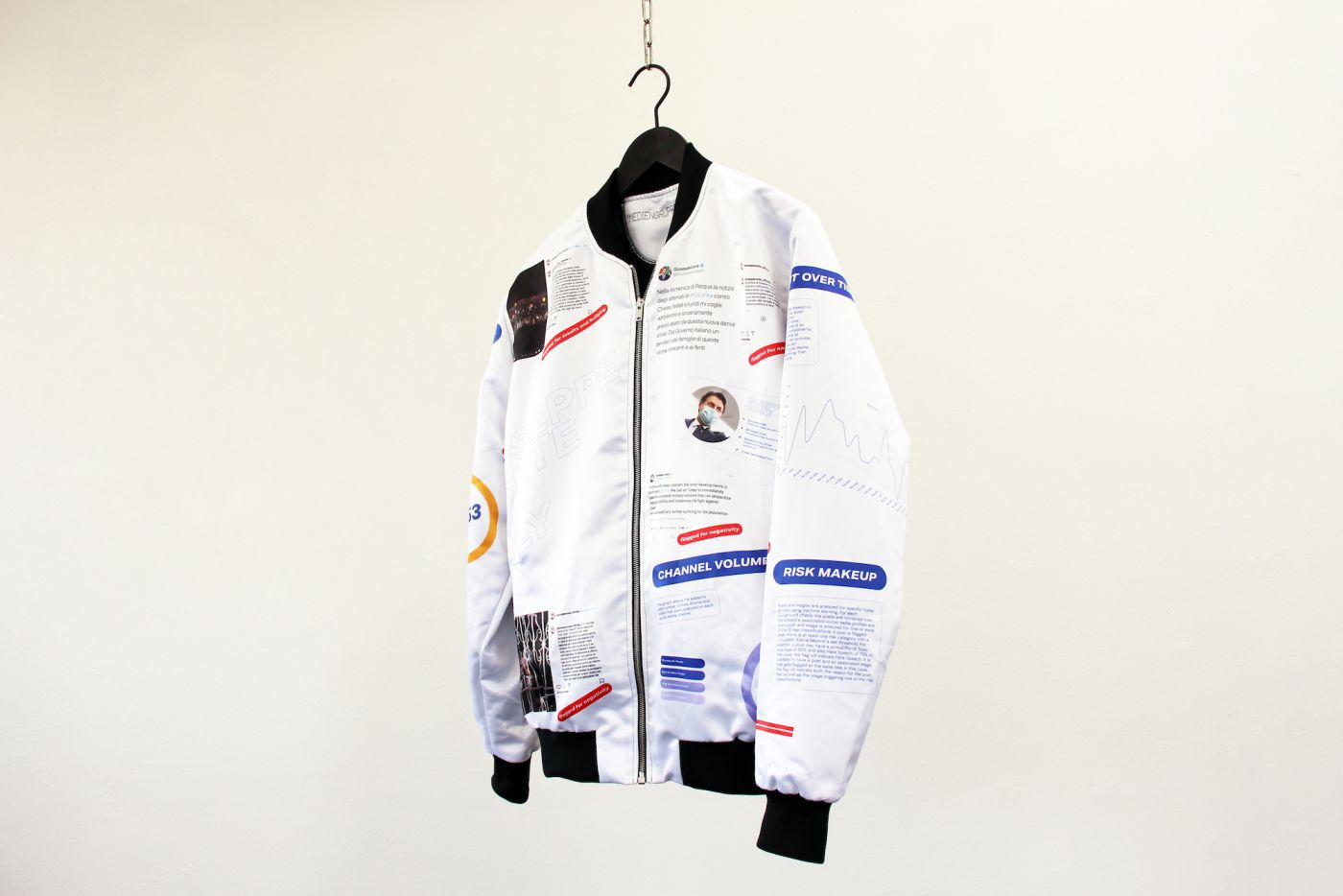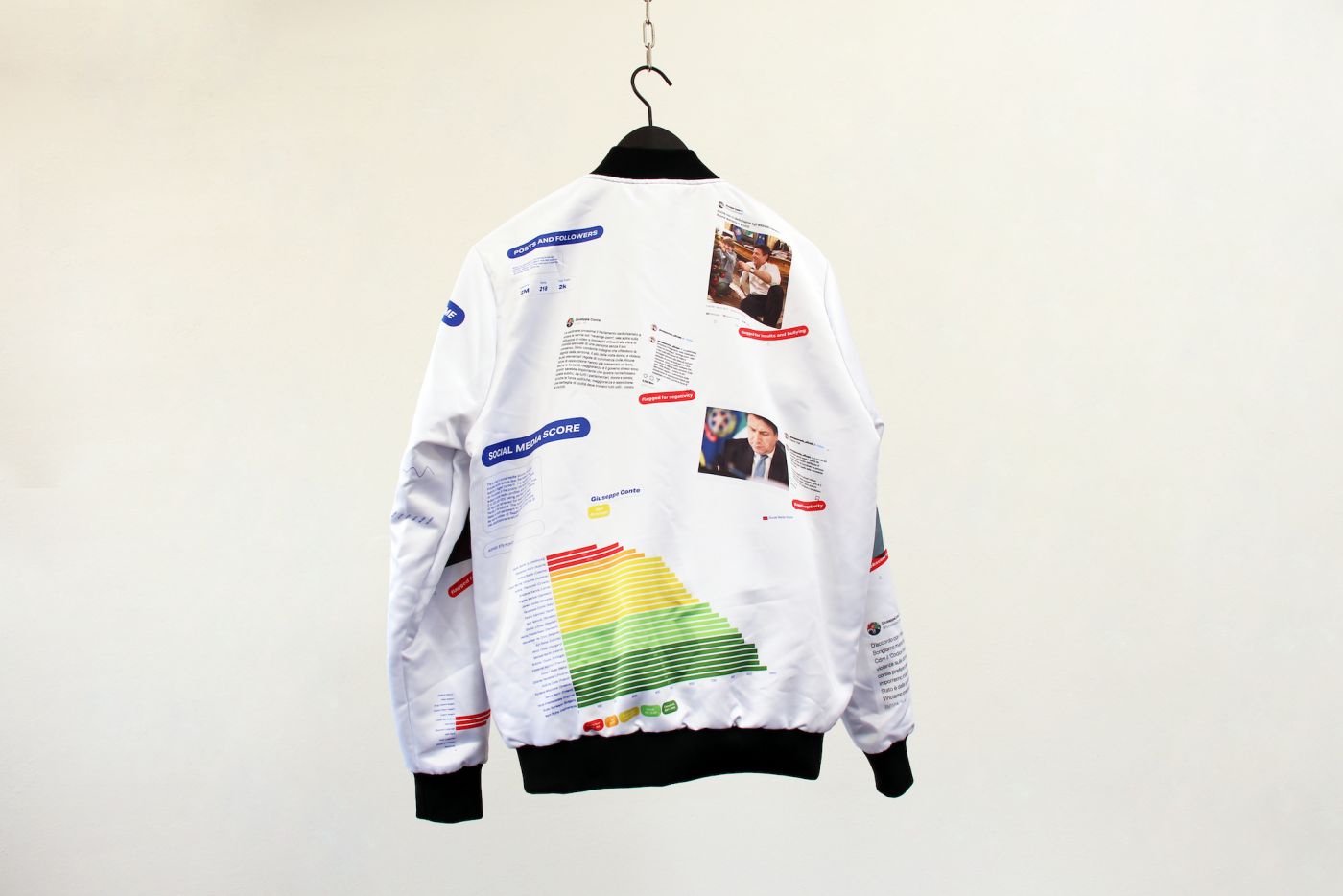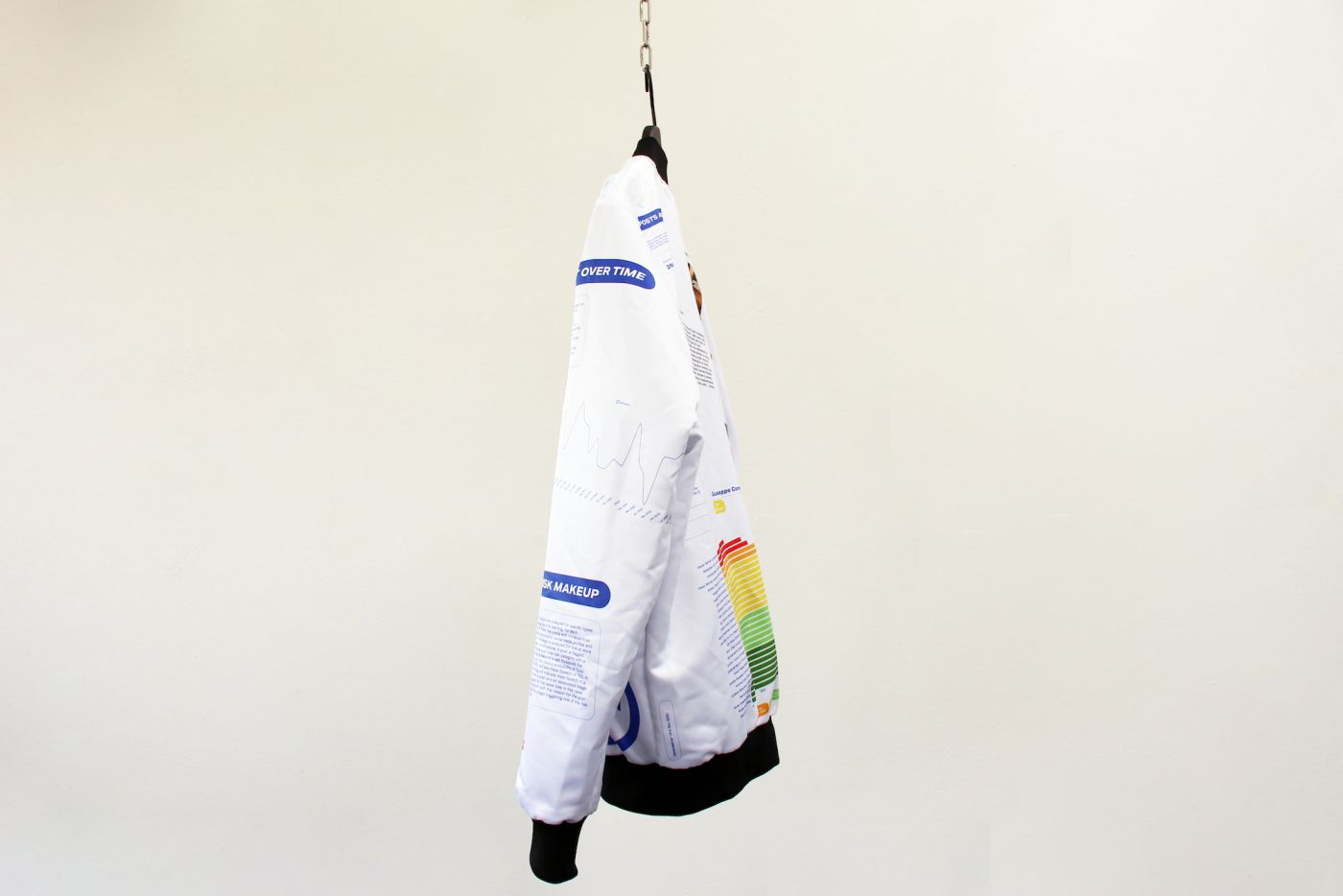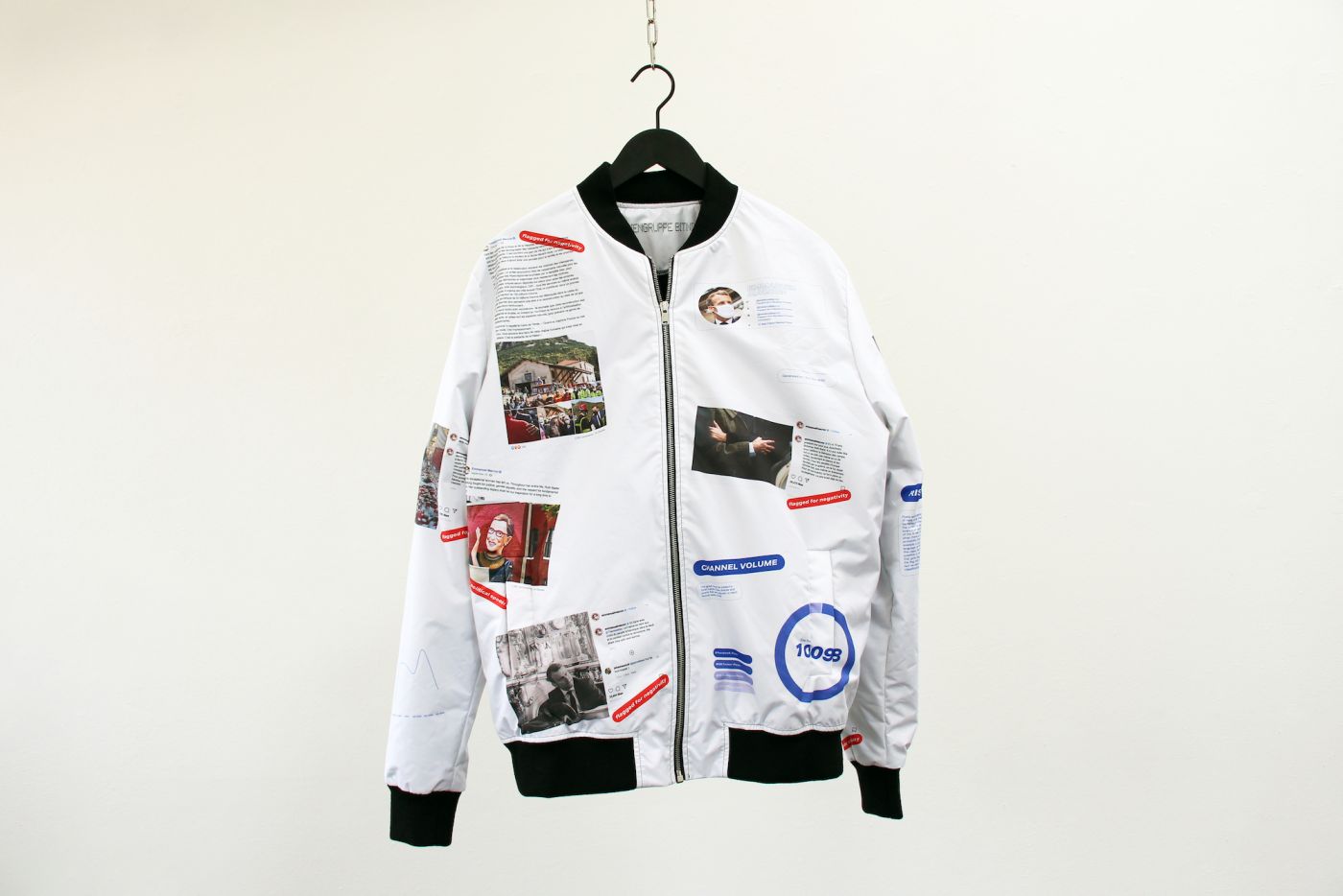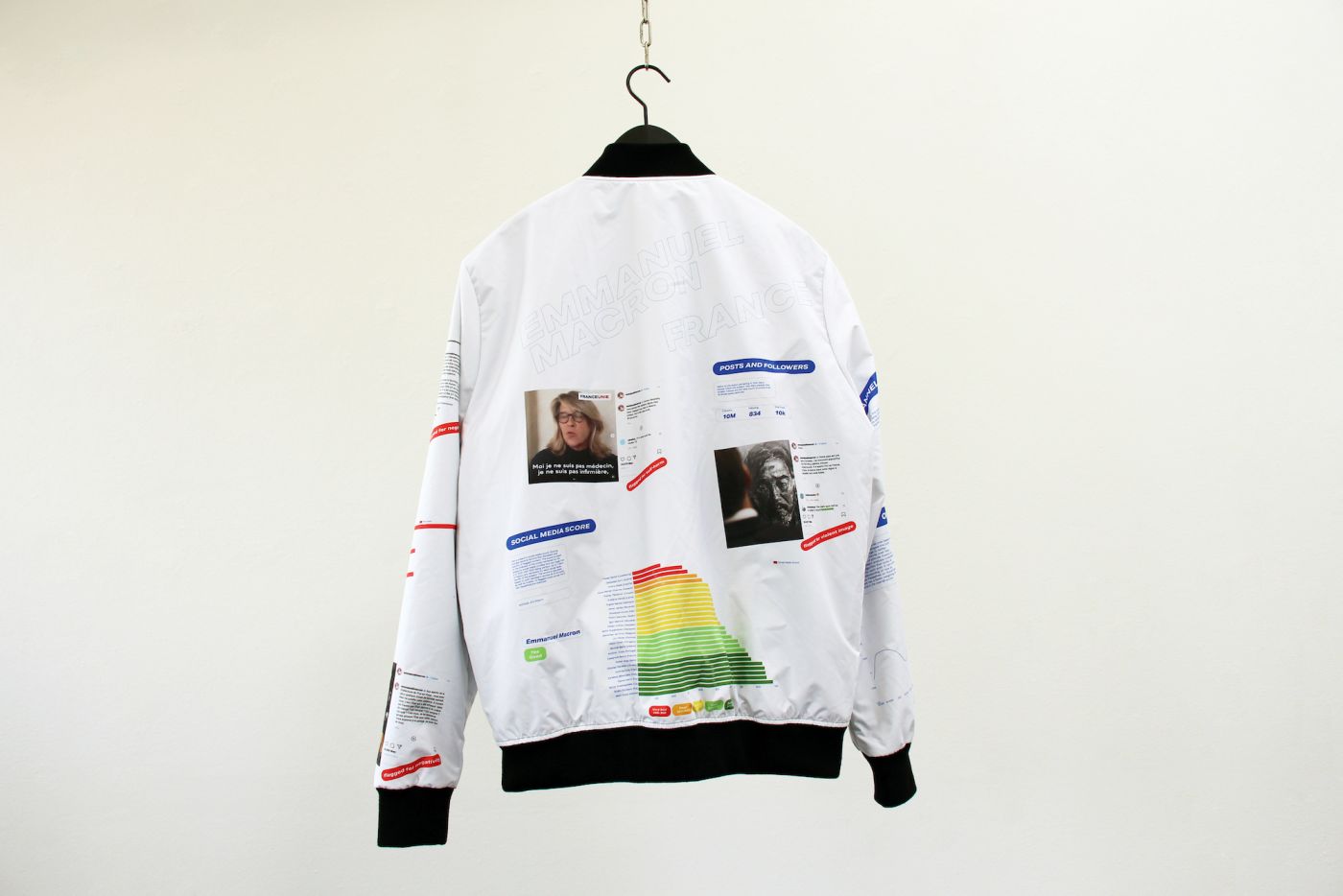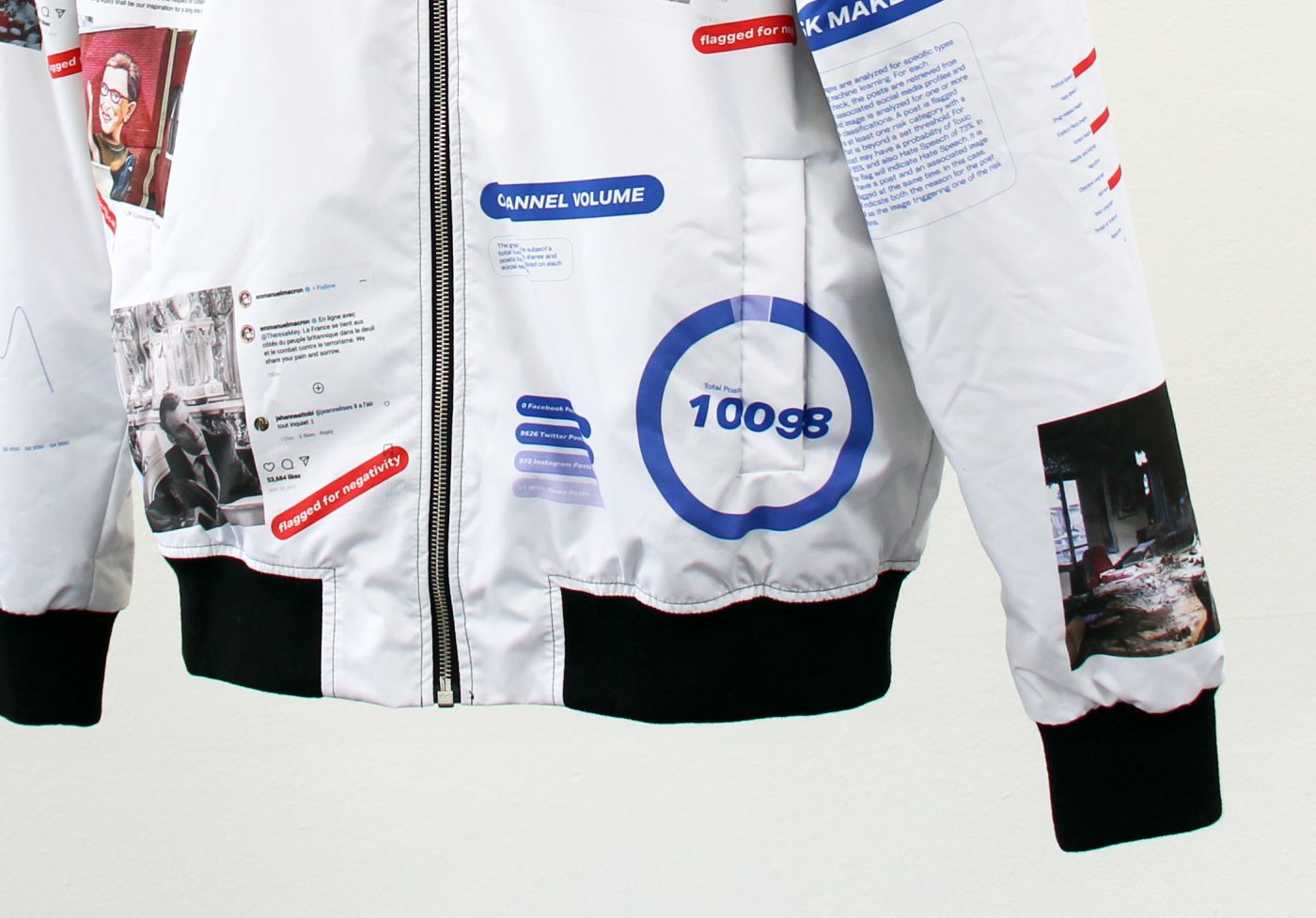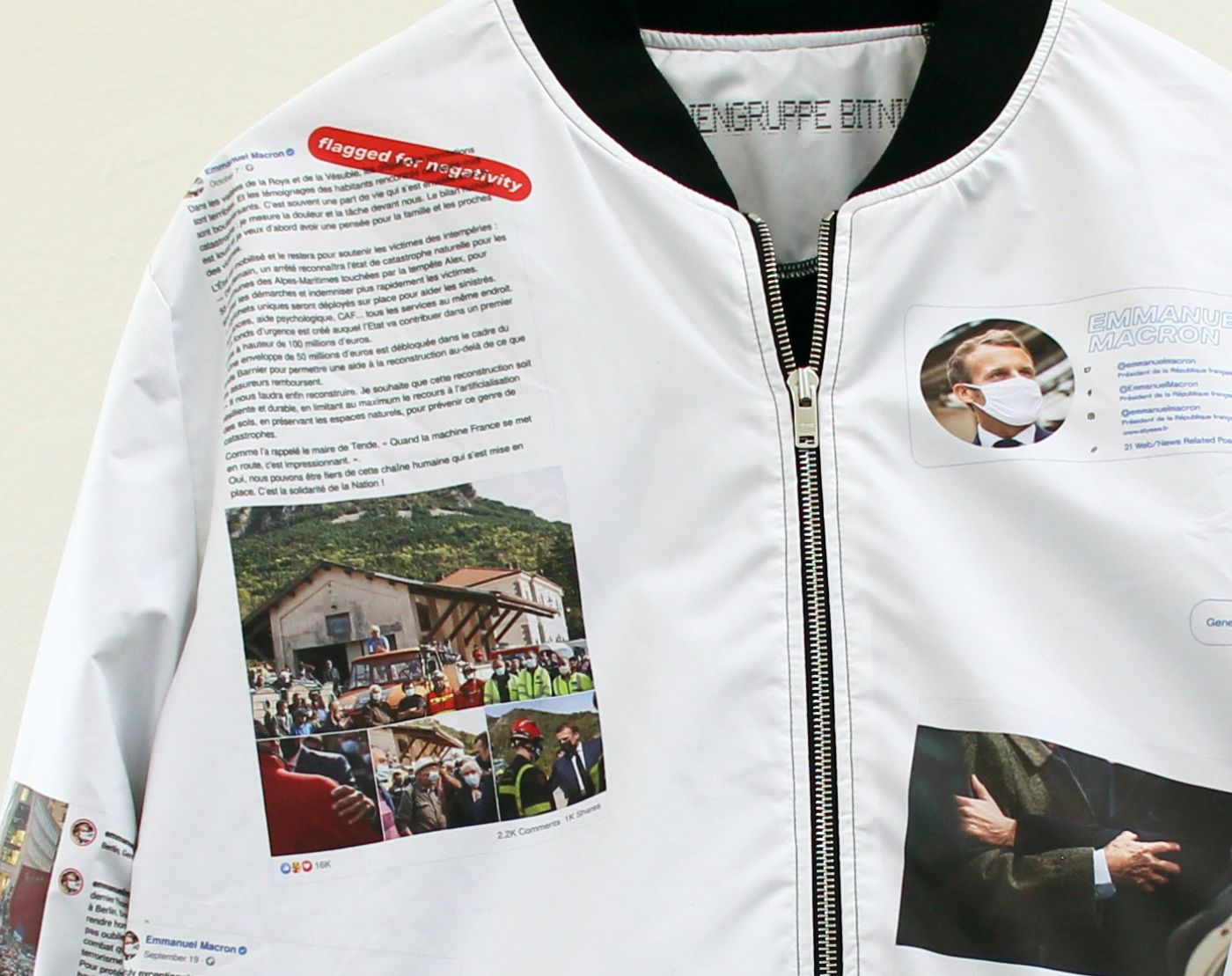!Mediengruppe Bitnik
Liste Year
Year of Birth
Country of Birth
Presented by
2021
1979
Belgium
Super Dakota
!Mediengruppe Bitnik (read – the not mediengruppe bitnik) are the artists Carmen Weisskopf and Domagoj Smoljo. They live and work in Berlin. They are working on and with the internet. Their practice expands from the digital to affect physical spaces, often intentionally applying loss of control to challenge established structures and mechanisms. !Mediengruppe Bitnik works formulate fundamental questions concerning contemporary issues.

Their works have been shown internationally including Palais de Tokyo, Nam June Paike Art Center, Fondazione Prada Milan, Shanghai Minsheng 21st Century Museum, City Art Gallery Ljubljana, Kunsthaus Zürich, NiMk Amsterdam, Kunsthalle Düsseldorf, Space Gallery London, Cabaret Voltaire Zurich, Beton7 Athens, Museum Folkwang Essen, Contemporary Art Center Vilnius, Beijing «Get it louder» Contemporary Art Biennial, La Gaîté Lyrique Paris, Gallery EDEN 343 São Paulo, the Roaming Biennale Teheran and others. They have received awards including Prix de la Société des Arts Genève, Swiss Art Award, Migros New ...
“The mainstream media tend to convey the understanding that an algorithm is neutral. But it's never neutral. No technology, no code ever is. It's written by humans, so there are always cultural values inscribed within the code, conscious and unconscious biases, power structures and certain ways of communicating. It's a bit like the way our European cities took shape. Our cities came out of certain understanding of public space in the 19th century, and of a certain way on moving on foot, for instance, that made them look the way they still are. In the same way, these algorithms now form an online landscape, which defines the way we move, communicate, shop and see online.”
- !Mediengruppe Bitnik
"FLAGGED FOR EXPLICIT IMAGE", 2021
What do algorithms see when they look at your social media profile? Are you a good provider of content? And what exactly is good? What does the algorithmic view on your social media profiles say about you? Analyses of social media profiles are employed in an increasing number of real-world transactions. From border control to job applications, social media profiles are used to assess the threat-levels of a candidate and verify their suitability to enter a country or organisation. Many of these social media background checks are done automatically by algorithmic entities. How and what do these algorit ...
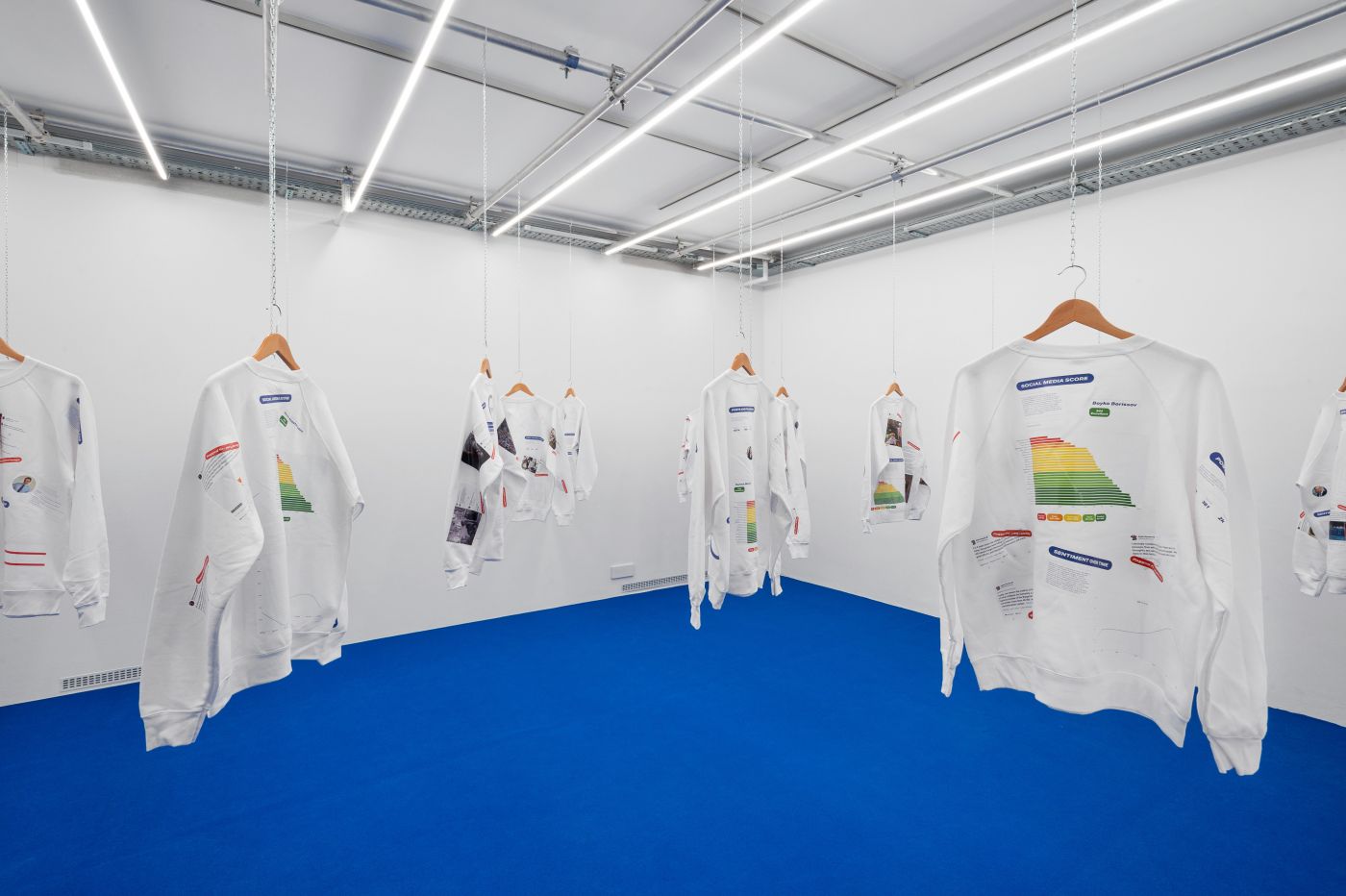
In 2020, !Mediengruppe Bitnik realised Flagged for Political Speech, a set of 27 custom-made shirts assessing the social media profiles of the state leaders of the 27 member states of the European Union. The sweatshirts are hung from the ceiling like wearable skins, each shirt containing both a metric interpretation of one leaders' social media profile and reproductions of posts which are flagged for one of the risk categories. Flagged for Political Speech was presented at AKSIOMA, Institute for Contemporary Art in Ljubljana (2021) and Delta Lab in Rijeka (2021).
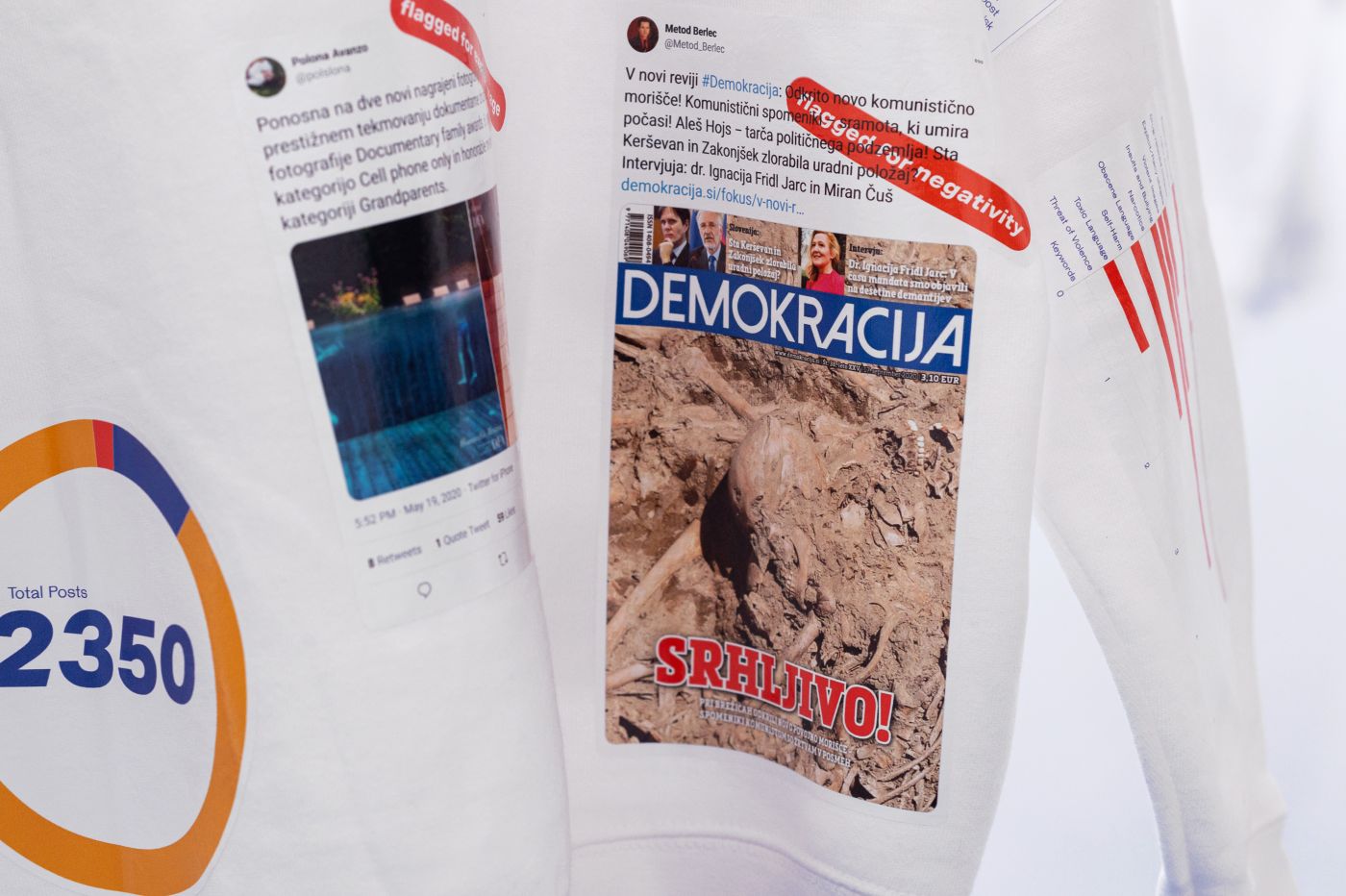
Flagged for Explicit Image is the continuation of the Flagged for - Series, a series of works where !Mediengruppe Bitnik looks at how social media profiles are increasingly used in gate-keeping in services, goods and institutions of basic human necessity. The work highlights how at borders, in banking, loans and insurance, when applying for a citizenship or a job, social media profiles are used to assess someone’s character and “compatibility”.
Flagged for Explicit Image (2021) presents a site-specific installation which consists from custom-printed jackets and tailor-made wallpaper showing the results of personal investigations based on social media ratings.
Thanks to !Mediengruppe Bitnik you can now find out how your social media profiles score. !Mediengruppe Bitnik evaluates your social media data through a commercial algorithm and prints it on a unique bomber jacket for you to wear and for all to see! !Mediengruppe Bitnik ran Super Dakota's and their own social media profiles through the service. Bitnik then interpreted the results of the analysis and used this as the basis to devise a customized bomber jacket. Each jacket shows Bitnik's interpretation of one persons personal social media ratings. Besides their social media scores for different parame ...
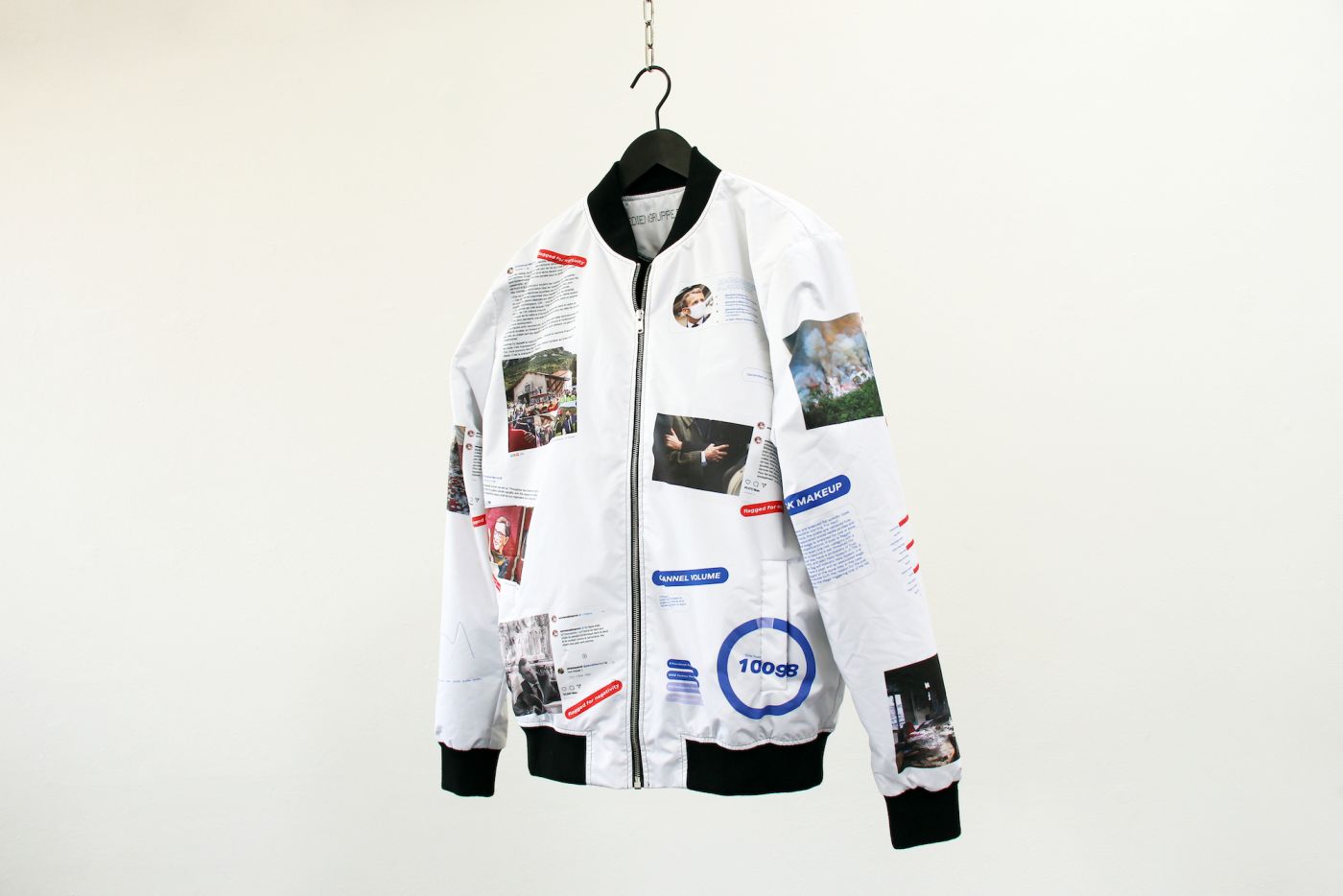
Collect your very own !Mediengruppe Bitnik custom-made jacket based on investigation and rating of your personal social media accounts.
Because of the large amount of data involved, assessment of social media profiles is usually delegated to an algorithm. The algorithms are proprietary and are developed and marketed as services by commercial companies. This means that the rules and codes along which the assessments are computed are secret. The output produced by the algorithms consists of metrics indicated contents which is deemed inappropriate without disclosure of what inappropriate actually means. How and what do these algorithms assess exactly? And what do their assessments look like?
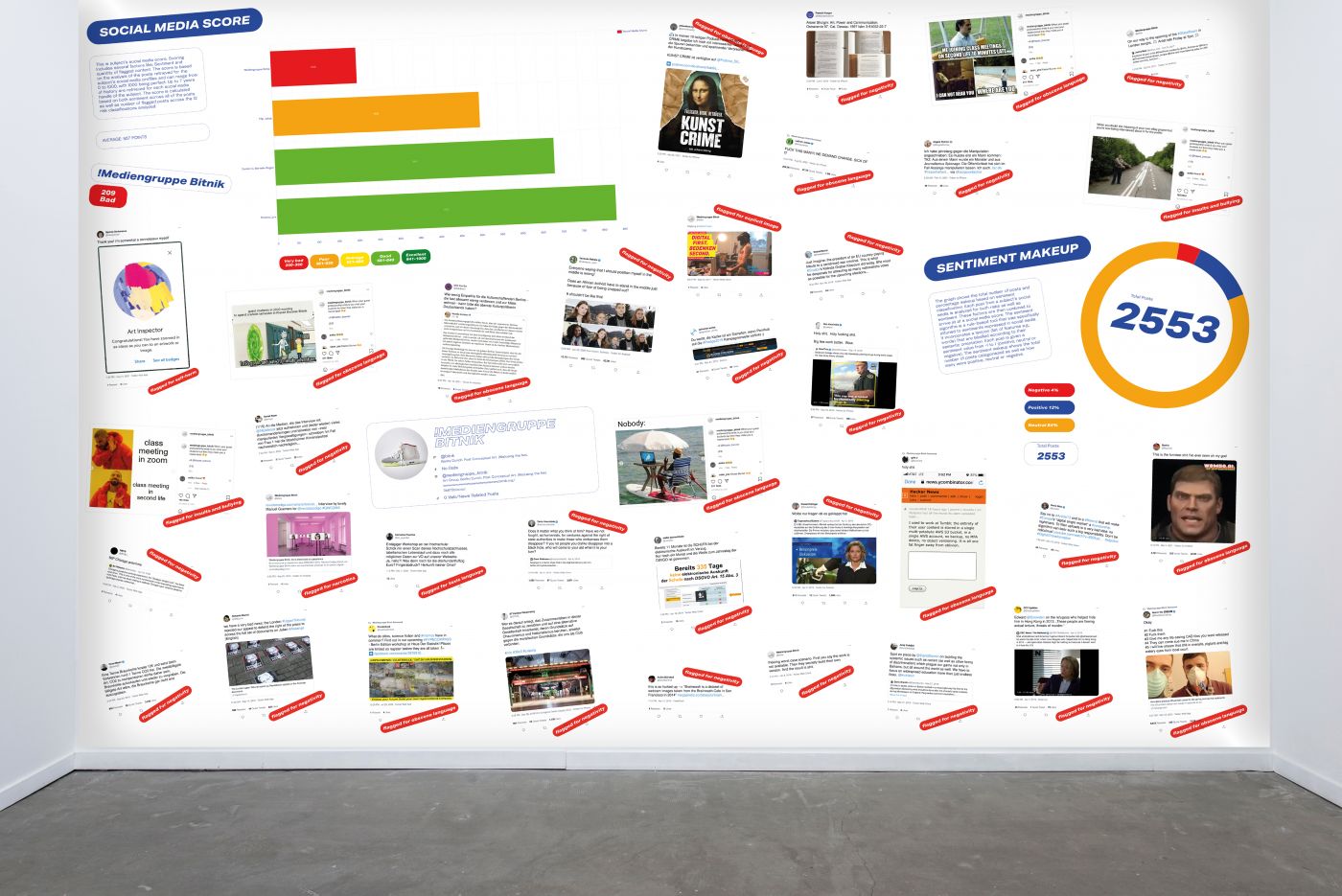
Along with the bomber jackets, !Mediengruppe Bitnik's Flagged for Explicit Image also presents a unique tailor-made wallpaper piece, printed with your custom-assessed social media data. The wallpaper work is a site specific installation to the size of a chosen wall. Your social media score can therefore become part of your living environment, bridging your avatar of digital presence with your personal in real life experience.
The relevance of Flagged for Explicit Image lies in the exposure of online social spheres and ratings with which we are labeled. Like the clothes we wear, our social media profiles have become the carrier of our identities. These online identities are used more and more by the gatekeepers of institutions, countries and organizations to verify that we are worthy of access.
"SOLVE THIS CAPTCHA SERIES", 2016-2017
Solve This Captcha is a series of neon pieces !Mediengruppe Bitnik developed between 2016 – 2018. The series is part of a larger body of works based on the hack of the Canadian online dating platform Ashley Madison in 2015. !Mediengruppe Bitnik use Ashley Madison as a case study to raise questions around the current relationship between human and machine, Internet intimacy and the use of virtual platforms to disrupt physical spaces.

For the Solve This Captcha series, the pick-up lines from Ashley Madison's bots are rendered as captchas in neon. Captchas are sequences of typographic characters only legible to people and not to robots. These online Turing tests function as gatekeepers to keep bots out of social networks - a standard that needs to be maintained with increasing efforts so that social media platforms are not flooded with machine creatures, and in order to ban spam.
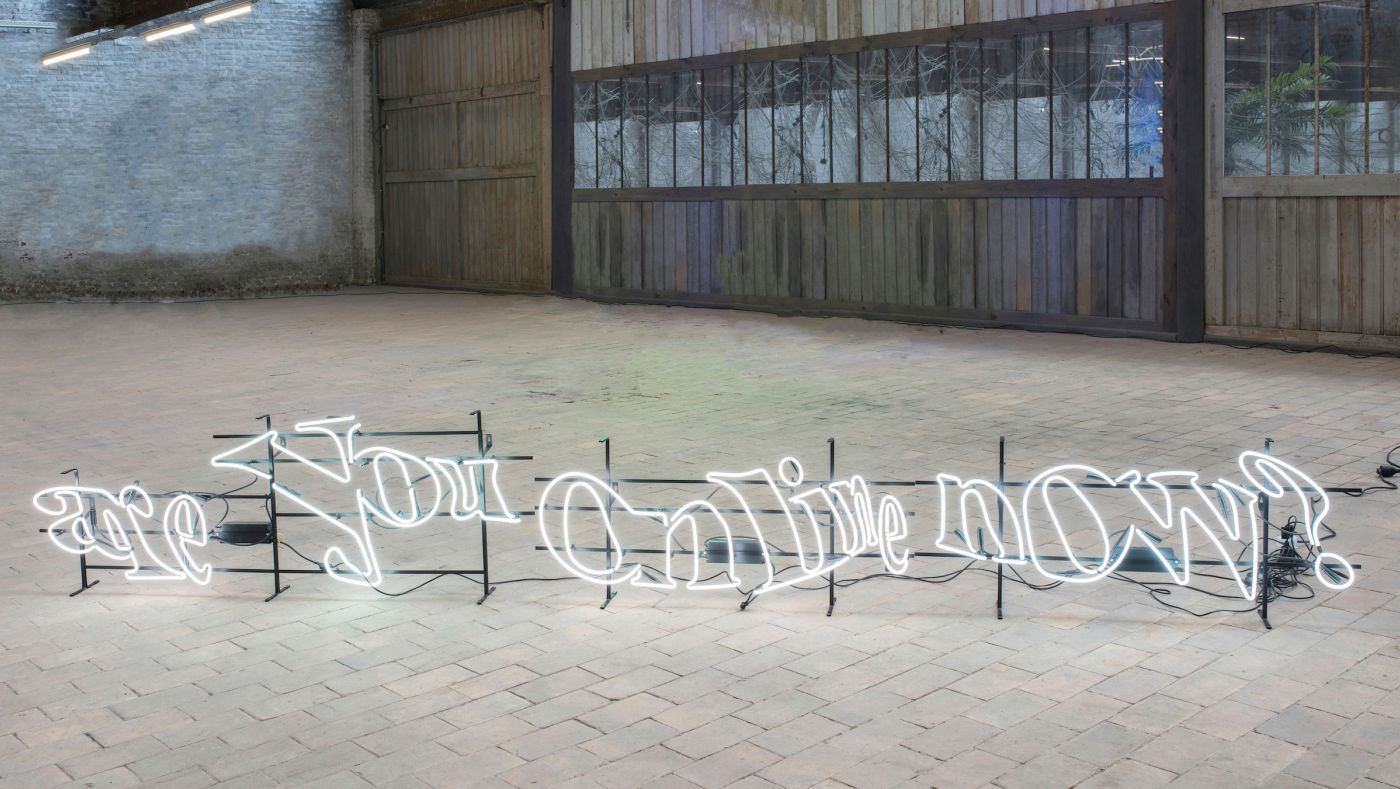
The luminous pieces capture the ambiguous nature of the bot-human divide. With around half of all online traffic pertaining to bots, the digital landscapes around us are transforming. Who is still part of the system and who is the system for? How do automated, algorithmic and artificial intelligent systems influence our reality and everyday life? The idea that we are surrounded by bots, that we communicate with on a daily basis and that we can hardly distinguish them from real people, is embedded in the neon works in this series.

To date, the Solve This Captcha series consists of five neon pieces of rendered text. All of them can be mounted on metal backings and are formed either from 8mm or 10mm white glass tubes (6500K). They have been shown in exhibitions at Kunsthaus Langenthal, Centre culturel suisse Paris, KINDL Berlin, EPFL ArtLab Lausanne, EIGEN+ART Lab Berlin and Swissnex San Francisco.
"RANDOM DARKNET SHOPPER - BOT'S COLLECTION", 2016
Random Darknet Shopper is an automated online shopping bot, designed to shop in the ‘deep web’ once a week with a budget of $100 in Bitcoins. The bot randomly purchases an item and has it them delivered directly to the exhibition space where it is unpacked and displayed. By randomizing its consumerism, the bot is guaranteed a wide selection of goods from the thousands listed on deep web markets.
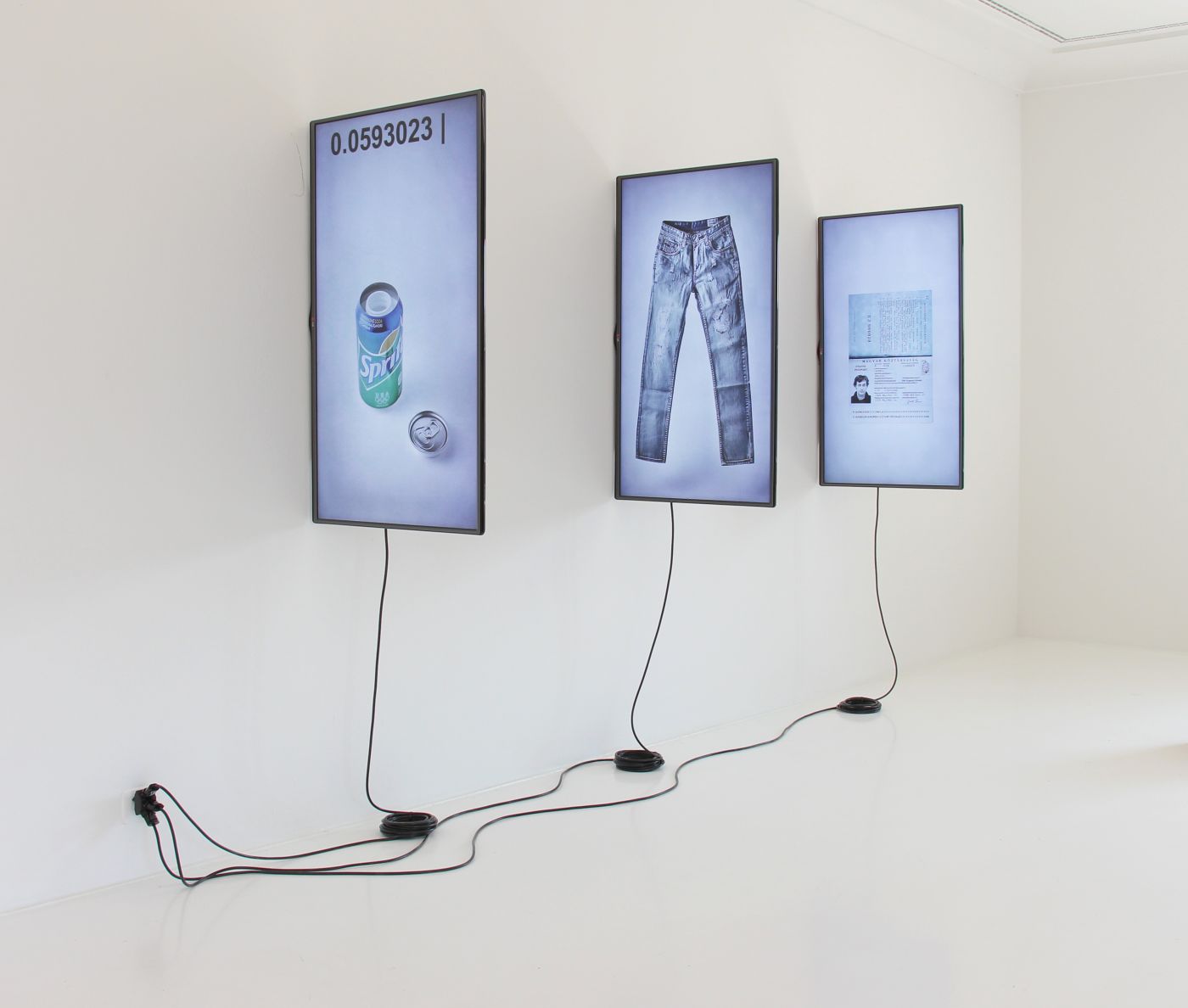
Random Darknet Shopper - The Bot’s Collection consists from installation of 3 TVs which show the 25 items ordered by the Darknet Shopper between 2014 and 2016. Among the things the so-called bot bought were fake sneakers and brand jeans, a credit card, a scan of a Hungarian passport and ecstasy pills.
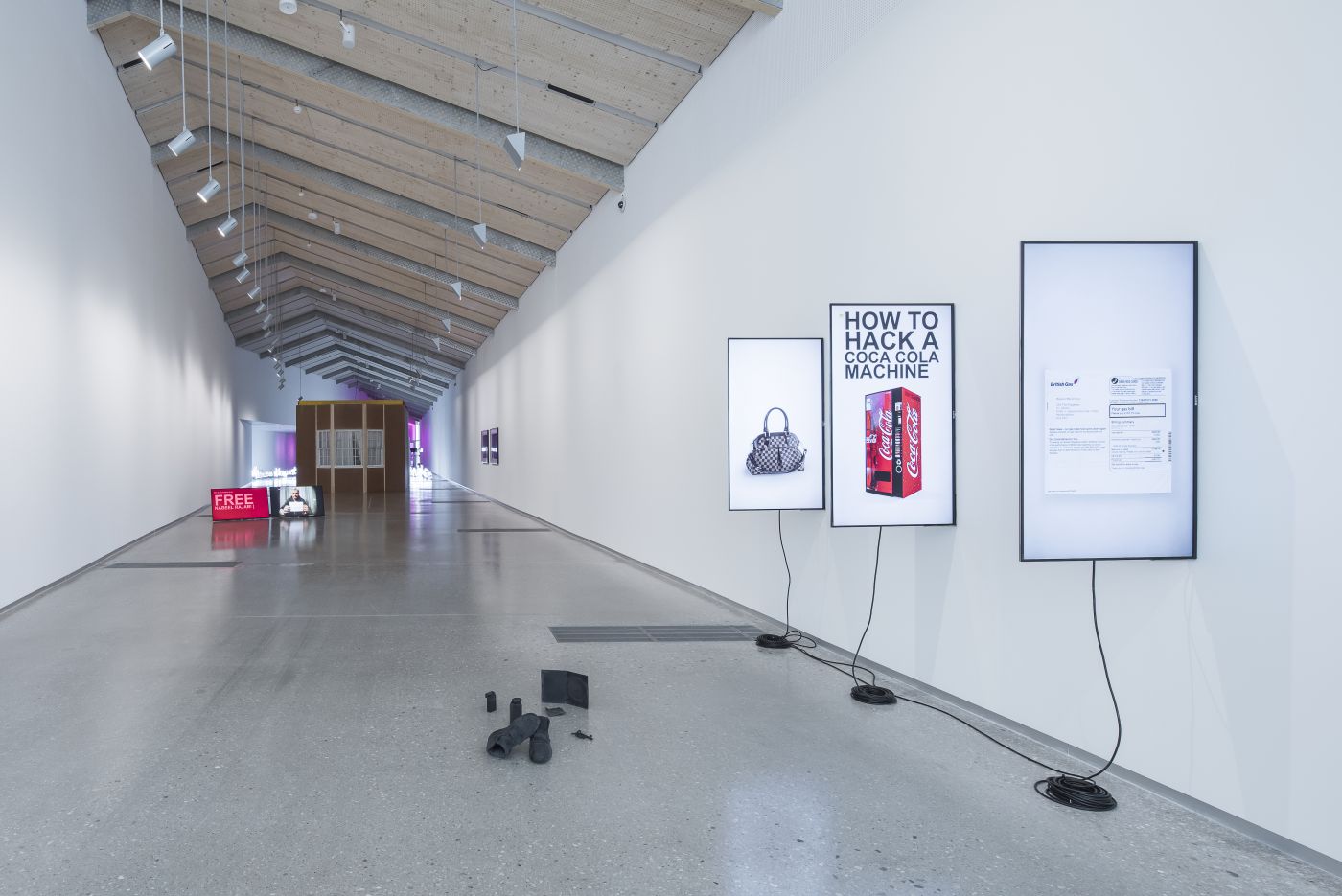
“Can a robot, or a piece of software, be jailed if it commits a crime? Where does legal culpability lie if code is criminal by design or default?”
- Mike Power, Guardian, 2015
As a result, by purchasing illegal drug during the exhibition at Kunsthalle St. Gallen in Switzerland in 2015, the public prosecutor’s office seized the Random Darknet Shopper. The seizure caused a sensation around the world because for the first time a robot had been arrested for an illegal act. At the same time, however, it remained unclear who was responsible for the actions of the bot. The bot itself, the artists or the exhibition space and it’s staff. But to what extent can software that acts without human influence be held responsible for illegal acts and how can confiscation be reconc ...

